VirtualLab Fusion includes several technologies for modeling complete optical systems from
nano-structure to macro-structure feature sizes.
Four types of free-space propagation methods for accurately modeling paraxial to high NA regions
in optical systems
Multiple Maxwell solvers for fast and accurate modeling of many types of optical components, such as:
diffractive optical elements, gratings, nanostructured components, scatterers, etc.
Three types of Fourier Transforms to efficiently analyze regions in optical systems with little
diffraction to significant diffraction
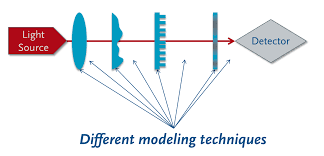
Four types of free space propagation methods in VirtualLab Fusion
The free space propagation methods in VirtualLab Fusion are:
- Spectrum of Plane Waves
- Fresnel operator
- Far field operator
- Geometrical optics operator
VirtualLab includes an automatic propagation selection algorithm for calculating the most efficient propagation method
in each region of the light path that optimizes error vs calculation effort.
The recommended propagation method in each region can either be used or it can be manually overridden.
For more information, click on
automatic
propagation algorithm
Multiple Maxwell solvers
For rigorous analysis of optical components, VirtualLab Fusion includes multiple Maxwell solvers.
To achieve Fast Physical Optics, Maxwell solvers are selectively applied in each region of the light path
to optimize accuracy vs numerical effort.
The solutions in each region are connected through non-sequential field tracing to solve Maxwell's equations in the entire optical system.
The solutions in each region are connected through non-sequential field tracing to solve Maxwell's equations in the entire optical system.
For a technical paper on this topic, click on
Fast Physical Optics
Below are three examples of Maxwell solvers in VirtualLab. As a beam propagates through different regions,
in the light path, calculations are done in the spatial domain (x-domain) or the spatial frequency domain (k-domain) as shown.
See below (Fourier Transforms) for more discussion of changing between these domains.
Example 1: Including free space, SLM and grating
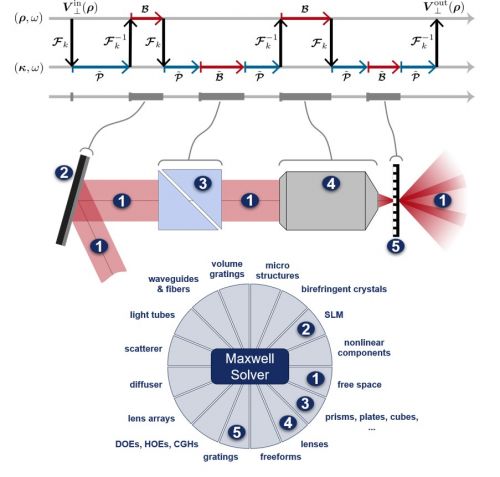
Example 2: Including free space and grating
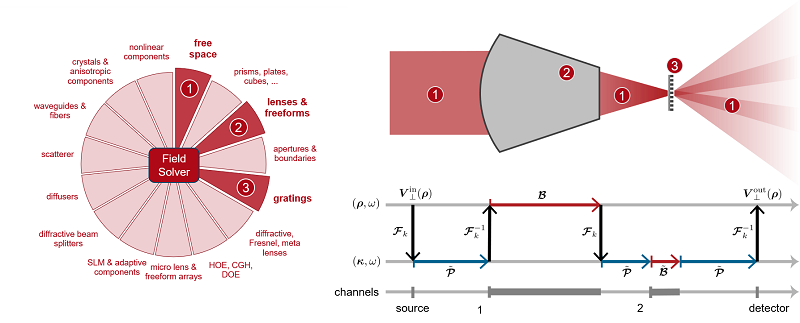
Example 3: Including free space and beam splitter
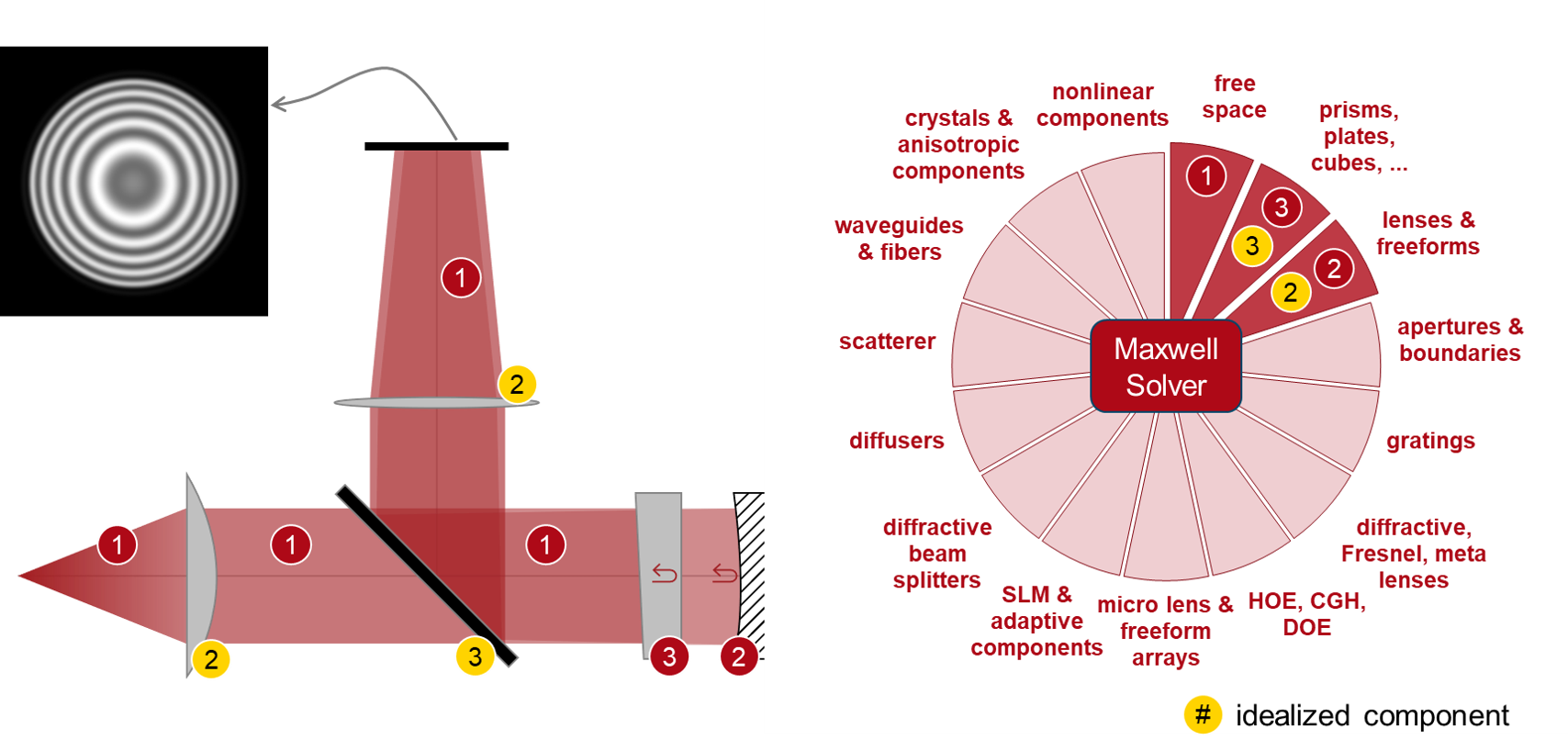
Three types of Fourier Transforms in VirtualLab Fusion
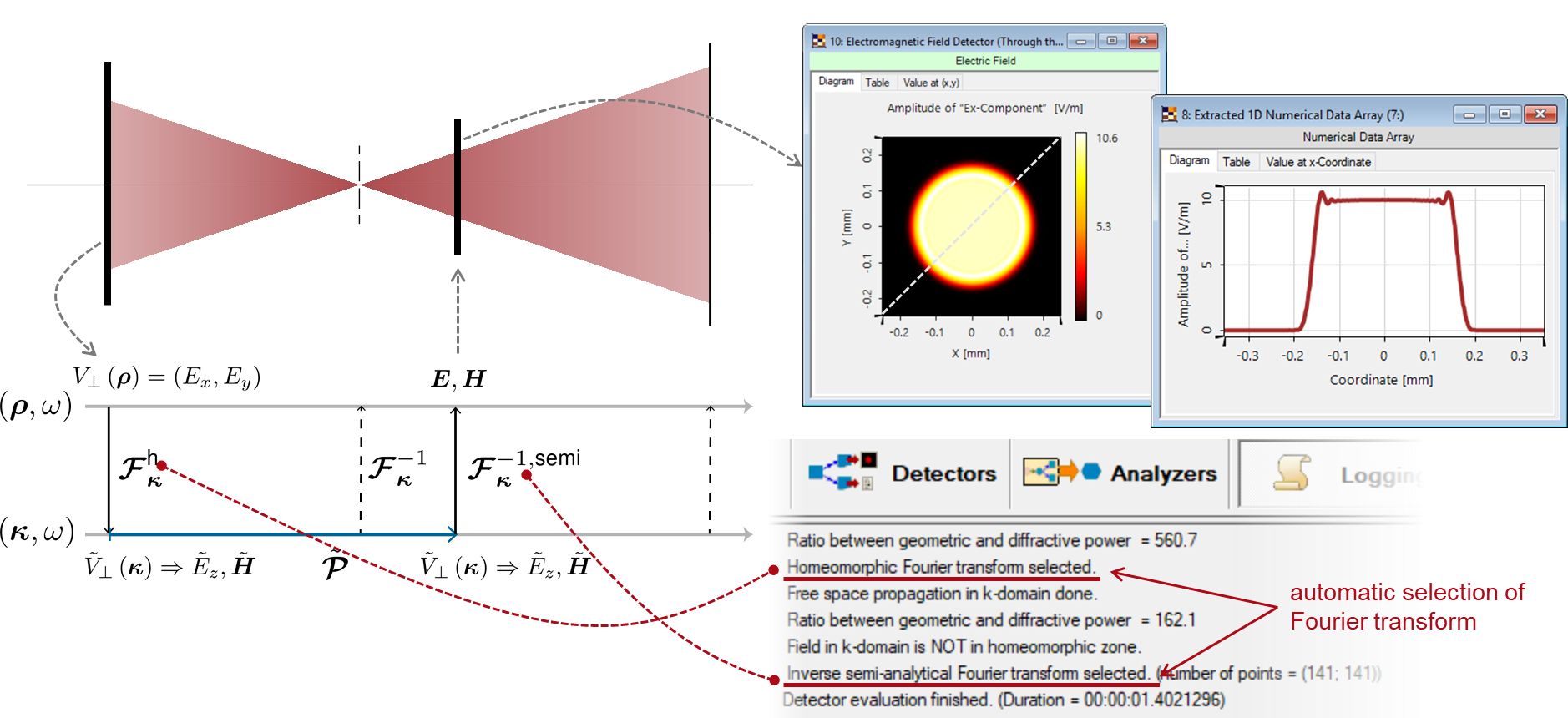
In order to efficiently model electromagnetic fields throughout optical systems that include diffractive optical
elements, nanostructured components, scatterers, etc., VirtualLab Fusion includes three types of Fourier Transforms.
This speeds up Maxwell solver calculation time by changing from the spatial domain
(x-domain) to the more efficient spatial frequency domain (k-domain) in regions where rigorous physical optics analysis is required.
For a technical paper on spatial domains, click on
Fast Physical Optics
VirtualLab includes three types of Fourier Transforms.
- Fast Fourier Transform
- Semi-Analytical Fourier Transform
- Pointwise Fourier Transform
The Fast Fourier Transform is a rigorous method for paraxial regions with significant, slow diffraction
The Semi-Analytical Fourier Transform (SAFT) is a rigorous hybrid analysis for fields having high quadratic phases.
The quadratic phase from the input field/spectrum is separated from the residual phase. The second order polynomial phase terms
are handled analytically. Since the sampling required for the residual field is relatively small, the computational effort
is reduced in these regions, while still providing rigorous analysis.
For a technical paper on the SAFT, click on
Semi-Analytical Fourier Transform
The Pointwise Fourier Transform (also called homeomorphic Fourier Transform) is approximate for regions with
strong, smooth wavefront phase and high NA.
For a technical paper on the PFT, click on
Pointwise Fourier Transform
The Fourier Transform used in each region can be selected manually or automatically within VirtualLab.
The automatic selection algorithm is based on the ratio of geometric to diffractive power in each region.
To see examples, click on
Automatic Selection of Fourier Transform
Fourier Transforms can be applied to sources, optical components and detectors.